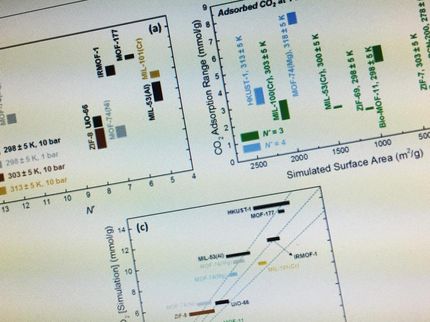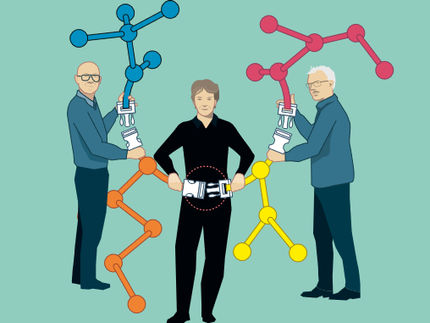Edible carbon dioxide sponge
All-natural nanostructures could address pressing environmental problem
A year ago Northwestern University chemists published their recipe for a new class of nanostructures made of sugar, salt and alcohol. Now, the same team has discovered the edible compounds can efficiently detect, capture and store carbon dioxide. And the compounds themselves are carbon-neutral.
The porous crystals -- known as metal-organic frameworks (MOFs) -- are made from all-natural ingredients and are simple to prepare, giving them a huge advantage over other MOFs. Conventional MOFs, which also are effective at adsorbing carbon dioxide, are usually prepared from materials derived from crude oil and often incorporate toxic heavy metals.
Other features of the Northwestern MOFs are they turn red when completely full of carbon dioxide, and the carbon capture process is reversible.
The findings, made by scientists working in the laboratory of Sir Fraser Stoddart, Board of Trustees Professor of Chemistry in the Weinberg College of Arts and Sciences, are published in the Journal of the American Chemical Society (JACS).
"We are able to take molecules that are themselves sourced from atmospheric carbon, through photosynthesis, and use them to capture even more carbon dioxide," said Ross S. Forgan, a co-author of the study and a postdoctoral fellow in Stoddart's laboratory. "By preparing our MOFs from naturally derived ingredients, we are not only making materials that are entirely nontoxic, but we are also cutting down on the carbon dioxide emissions associated with their manufacture."
The main component, gamma-cyclodextrin, is a naturally occurring biorenewable sugar molecule that is derived from cornstarch.
The sugar molecules are held in place by metals taken from salts such as potassium benzoate or rubidium hydroxide, and it is the precise arrangement of the sugars in the crystals that is vital to their successful capture of carbon dioxide.
"It turns out that a fairly unexpected event occurs when you put that many sugars next to each other in an alkaline environment -- they start reacting with carbon dioxide in a process akin to carbon fixation, which is how sugars are made in the first place," said Jeremiah J. Gassensmith, lead author of the paper and also a postdoctoral fellow in Stoddart's laboratory. "The reaction leads to the carbon dioxide being tightly bound inside the crystals, but we can still recover it at a later date very simply."
The fact that the carbon dioxide reacts with the MOF, an unusual occurrence, led to a simple method of detecting when the crystals have reached full capacity. The researchers place an indicator molecule, which detects changes in pH by changing its color, inside each crystal. When the yellow crystals of the MOFs are full of carbon dioxide they turn red.
The simplicity of the new MOFs, allied with their low cost and green credentials, have marked them as candidates for further commercialization. Ronald A. Smaldone, also a postdoctoral fellow in Stoddart's group and a co-author of the paper, added, "I think this is a remarkable demonstration of how simple chemistry can be successfully applied to relevant problems like carbon capture and sensor technology."
Original publication
Other news from the department science

Get the chemical industry in your inbox
By submitting this form you agree that LUMITOS AG will send you the newsletter(s) selected above by email. Your data will not be passed on to third parties. Your data will be stored and processed in accordance with our data protection regulations. LUMITOS may contact you by email for the purpose of advertising or market and opinion surveys. You can revoke your consent at any time without giving reasons to LUMITOS AG, Ernst-Augustin-Str. 2, 12489 Berlin, Germany or by e-mail at revoke@lumitos.com with effect for the future. In addition, each email contains a link to unsubscribe from the corresponding newsletter.




















































